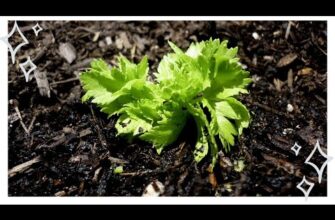- Подготовка почвы для выращивания гвоздики Шабо на рассаду
- Выбор подходящего субстрата
- Подготовка семян перед посевом
- Выбор качественных семян
- Проращивание семян
- Обработка семян перед посевом
- Посев и выращивание гвоздики Шабо на рассаду
- Выбор оптимального времени для посева
- Глубина и расстояние между семенами в почве
- Уход за рассадой гвоздики Шабо
- Трансплантация гвоздики Шабо на открытый грунт
- Выбор подходящего места для посадки
- Подготовка почвы перед пересадкой
- Выбор подходящего грунта
- Обработка почвы
- Подготовка грядок
- Способы пересадки рассады гвоздики Шабо
- 1. Подготовка почвы
- 2. Выкапывание ям
- 3. Пересадка рассады
- Уход за гвоздикой Шабо после пересадки
- Вопрос-ответ:
- Какие условия нужно создать для выращивания гвоздики Шабо из семян на рассаду?
- Какой грунт лучше использовать для выращивания гвоздики Шабо на рассаду?
- Как часто нужно поливать рассаду гвоздики Шабо из семян?
- Какой режим освещения нужен для рассады гвоздики Шабо из семян?
- Как долго нужно выращивать рассаду гвоздики Шабо из семян перед пересадкой в грунт?
- Видео:
- ГВОЗДИКА Шабо. 1. Посев, всходы, пересадка, прищипка // Carnation. 1. Starting, sprouts, nipping

Гвоздика Шабо – это изысканный и красивый сорт гвоздики, который пользуется большой популярностью среди цветоводов. Он отличается яркими и насыщенными цветами, а также прекрасным ароматом. Если вы хотите вырастить гвоздику Шабо на своей даче или в домашних условиях, лучший способ – начать с семян и вырастить рассаду.
Первый шаг при выращивании гвоздики Шабо – это посадка семян на рассаду. Чтобы сделать это правильно, нужно выбрать плодородную почву и создать оптимальные условия для прорастания семян. Семена следует посеять на небольшую глубину, удобно использовать специальные контейнеры или горшки, чтобы обеспечить хорошую вентиляцию и дренаж.
Важно помнить, что гвоздики Шабо нуждаются в свете и тепле для полноценного роста. Поэтому рекомендуется поместить контейнер с семенами на рассаду на яркое место, где будет достаточно солнечного света. Также необходимо регулярно поливать рассаду, но избегать переувлажнения, чтобы не вызвать гниение корней.
Подготовка почвы для выращивания гвоздики Шабо на рассаду
Выращивание гвоздики Шабо из семян на рассаду — увлекательный процесс, требующий тщательной подготовки почвы. Семена гвоздики Шабо можно сеять прямо на грядку, но для получения крепких и здоровых рассадных растений лучше использовать грунтовую смесь.
Перед посевом семян гвоздики Шабо на рассаду необходимо приготовить почву. Для этого можно использовать универсальную почву, предварительно смешав ее с песком или перлитом для обеспечения хорошей воздухопроницаемости и дренирования. Также можно приготовить смесь из равных частей торфа, песка и перлита.
Почву для гвоздики Шабо на рассаду следует дезинфицировать, чтобы предотвратить появление грибковых и бактериальных заболеваний. Для этого ее можно обработать горячей водой или слегка подсушить в духовке. Также рекомендуется добавить в почву комплексное удобрение, содержащее макро- и микроэлементы, необходимые для нормального развития гвоздики.
После подготовки почвы можно приступать к посеву семян гвоздики Шабо на рассаду. Для этого следует создать небольшие углубления в почве и поместить в каждое по несколько семян. Затем укройте семена тонким слоем почвы или песка толщиной около 0,5 см.
После посева рассаду гвоздики Шабо следует полить теплой водой и поместить в теплое и светлое место. Температура в помещении должна быть примерно 20-25 градусов. Через несколько дней появятся первые всходы, их необходимо тщательно ухаживать, поддерживая оптимальные условия температуры и освещения.
Выбор подходящего субстрата
Для успешного выращивания гвоздики Шабо из семян на рассаду необходимо выбрать подходящий субстрат. Он должен быть питательным, рыхлым и хорошо воздухопроницаемым.
Одним из лучших вариантов субстрата для гвоздик является смесь из перегнойного и речного песка. Такая смесь обеспечивает достаточный уровень питательности и хорошую дренировку, что особенно важно для гвоздики Шабо. Также можно добавить в субстрат небольшое количество перегнойной земли или торфа для повышения плодородия.
Перед посевом семян гвоздик необходимо подготовить субстрат, просеяв его через сито для удаления крупных комков и посторонних примесей. Затем субстрат следует хорошо увлажнить перед посевом семян.
Выбор подходящего субстрата является важным шагом при выращивании гвоздики Шабо из семян на рассаду. Заботливое отношение к выбору субстрата поможет создать оптимальные условия для роста и развития рассады гвоздик.
Подготовка семян перед посевом

Перед началом выращивания гвоздики Шабо из семян на рассаду, необходимо правильно подготовить семена. Для этого следует следовать нескольким шагам.
Выбор качественных семян
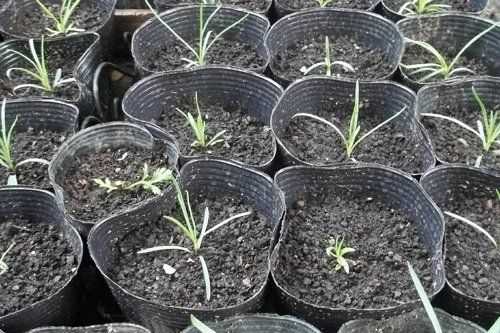
Перед посевом гвоздики Шабо необходимо приобрести качественные семена. Они должны быть свежими, без признаков повреждений или засохшей оболочки. Рекомендуется покупать семена у надежных поставщиков, чтобы быть уверенным в их качестве.
Проращивание семян
Для более успешного всхода семян гвоздики Шабо можно провести процедуру проращивания. Для этого семена помещают на несколько часов в воду при комнатной температуре. Затем они выкладываются на влажную губку или марлю и оставляются в теплом месте до появления проростков.
Обработка семян перед посевом
Для борьбы с возможными болезнями и вредителями семена гвоздики Шабо рекомендуется обработать перед посевом. Для этого можно использовать специальные препараты, предназначенные для обработки семян. Обработка поможет повысить устойчивость рассады к возможным заболеваниям и обеспечит более успешное развитие растения.
Посев и выращивание гвоздики Шабо на рассаду
Гвоздика Шабо — один из самых популярных сортов гвоздики, который отличается крупными и яркими цветами. Чтобы вырастить эту красоту на своем участке, нужно начать с посева семян на рассаду.
Выбор семян: Для успешного выращивания гвоздики Шабо необходимо выбрать качественные семена. Они должны быть свежими и хорошо обработанными. Лучше всего приобретать семена у проверенных производителей или специализированных магазинов.
Подготовка и посев семян: Перед посевом семена гвоздики Шабо рекомендуется проращивать. Для этого их помещают на 12-24 часа в воду при комнатной температуре. Затем семена высеваются в плоский контейнер с питательной почвой, смешанной с песком для обеспечения хорошего дренажа. Семена необходимо посеять на глубину 1-2 см и утрамбовать почву.
Уход за рассадой: После посева контейнер с семенами гвоздики Шабо следует поместить в теплое и яркое место. Регулярно проветривайте рассаду и следите за уровнем влажности почвы. Важно избегать пересыхания или переувлажнения почвы. При появлении первых побегов, рассаду необходимо разделять и пересаживать в отдельные горшки или ящики с питательной почвой.
Открытый грунт: После того как рассада гвоздики Шабо достигнет определенного размера и привыкнет к окружающим условиям, ее можно высаживать на открытый грунт. Выберите для высадки солнечное и защищенное от ветра место. Глубина посадки должна быть равна глубине, на которой гвоздика росла в рассаде. После посадки рассаду обильно полейте водой и следите за регулярным поливом и удалением сорняков.
Выбор оптимального времени для посева
Посев гвоздики Шабо из семян на рассаду является важным этапом выращивания этого растения. Чтобы получить хорошие результаты, необходимо выбрать оптимальное время для посева.
Лучшее время для сева семян гвоздики Шабо на рассаду — ранняя весна или поздняя зима. В это время грунт достаточно остынет, а температура воздуха будет несколько выше, что способствует хорошему прорастанию семян.
Рекомендуется сеять семена гвоздики Шабо на рассаду в небольшие горшочки или контейнеры, наполненные питательной почвой. Семена следует разложить по поверхности почвы и слегка приподнять их, чтобы они не зарывались слишком глубоко.
После посева рассаду гвоздики Шабо необходимо укрыть пленкой или стеклом, чтобы создать тепличный эффект и обеспечить оптимальные условия для прорастания семян. Важно поддерживать постоянную влажность почвы и воздуха, периодически проветривая рассаду.
В итоге, выбрав оптимальное время для посева семян гвоздики Шабо на рассаду и обеспечив правильные условия для их прорастания, вы сможете вырастить красивое и здоровое растение, которое будет радовать вас своей красотой на протяжении всего сезона.
Глубина и расстояние между семенами в почве
Гвоздики Шабо из семян выращивают на рассаду, поэтому важно правильно определить глубину и расстояние между семенами при посадке.
Семена гвоздики Шабо обычно высевают на глубину около 0,5-1 см. Глубокая посадка может затруднить прорастание семян, а поверхностное размещение может привести к их высушиванию. Поэтому рекомендуется выбирать оптимальную глубину в указанном диапазоне.
Что касается расстояния между семенами, то оптимальным считается интервал 3-5 см. Это позволит растениям иметь достаточное пространство для роста и развития, а также обеспечит доступ к свету и питательным веществам. Если семена разместить слишком близко друг к другу, они могут конкурировать за ресурсы и становиться более слабыми.
Уход за рассадой гвоздики Шабо
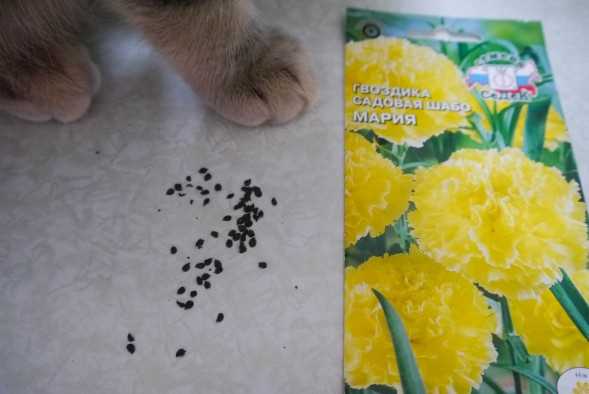
Для успешного выращивания рассады гвоздики Шабо необходимо обеспечить оптимальные условия и правильный уход. Важным этапом является подготовка почвы для сева семян.
Перед севом семян гвоздики Шабо необходимо выбрать качественные семена, которые можно приобрести в специализированных магазинах или интернет-магазинах. Семена гвоздики Шабо обладают высокой капризностью к условиям выращивания, поэтому их следует сеять только на рассаду.
Семена гвоздики Шабо следует сеять на глубину около 2-3 мм в подготовленные ящики или горшки с питательной почвой. После посева рекомендуется увлажнить почву из распылителя, чтобы предотвратить замывание семян.
Так стоп!!! Вы всё ещё не подписаны на наши каналы в Телеграмм и Дзен? Посмотрите: ТГ - (https://t.me/ru1ogorod) и Дзен (https://dzen.ru/1ogorodru)
Для обеспечения оптимальных условий для роста рассады гвоздики Шабо необходимо создать теплицу или использовать пленку для создания микроклимата. Температура воздуха в теплице должна быть в пределах 20-25 градусов Цельсия.
Важно регулярно следить за влажностью почвы и проводить полив рассады, чтобы не допустить пересыхания или переувлажнения. Подкормку рассады гвоздики Шабо рекомендуется проводить каждые 10-14 дней с помощью комплексных удобрений.
Также важно обратить внимание на освещение рассады гвоздики Шабо. Для нормального развития растений необходимо обеспечить им достаточное количество света. В случае недостатка естественного света, можно использовать фитолампы или искусственное освещение.
Трансплантация гвоздики Шабо на открытый грунт
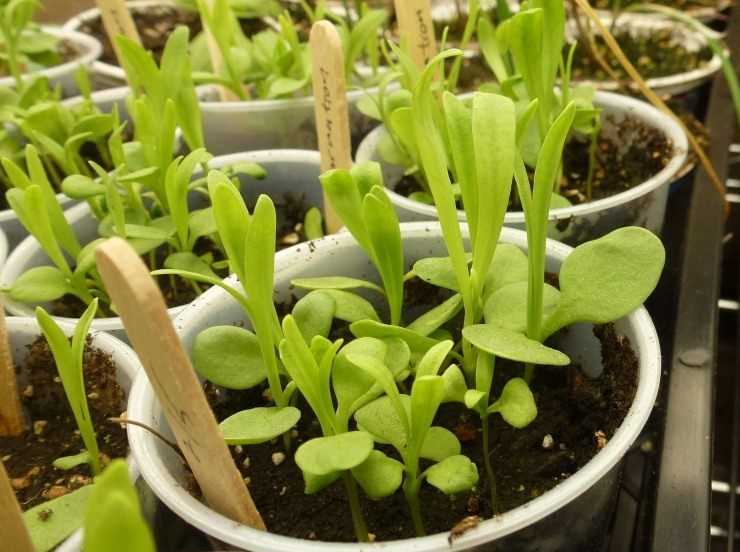
После того, как рассада гвоздики Шабо достигла определенного размера, ее можно трансплантировать на открытый грунт. Процесс трансплантации требует подготовки и определенных действий для обеспечения здоровья и роста растений.
Перед трансплантацией необходимо выбрать подходящее место, где гвоздики Шабо будут расти. Они предпочитают солнечные участки с хорошим дренированием. Подготовьте почву, добавив органическое удобрение и пролив ее водой.
Перед трансплантацией аккуратно вытащите гвоздики Шабо из контейнеров или горшков, стараясь не повредить корни. Удалите излишки почвы, чтобы корни были свободны. Разместите растения на подготовленной почве, оставляя достаточное расстояние между ними для роста.
После трансплантации регулярно поливайте гвоздики Шабо, чтобы сохранить влажность почвы, но избегайте переувлажнения. Также регулярно удаляйте сорняки и обеспечьте растения поддержкой, если это необходимо.
Выбор подходящего места для посадки
Для успешного выращивания гвоздики Шабо из семян на рассаду необходимо выбрать подходящее место для посадки. Учитывайте следующие факторы:
- Освещение: гвоздики Шабо предпочитают яркий свет, поэтому выбирайте место с хорошей освещенностью. Оно должно быть достаточно светлым, чтобы растения получали необходимое количество солнечного света.
- Температура: гвоздики Шабо требуют умеренной температуры для нормального роста и развития. Идеальная температура для рассады гвоздик Шабо составляет около 20-25 градусов Цельсия.
- Влажность: гвоздики Шабо нуждаются в умеренной влажности воздуха. Постарайтесь поддерживать оптимальный уровень влажности, чтобы предотвратить пересыхание или переувлажнение почвы.
Также учтите, что гвоздики Шабо являются многолетними растениями, поэтому выберите место, где они могут длительное время занимать одну и ту же площадь. Обратите внимание на состав почвы — гвоздики Шабо предпочитают рыхлую, плодородную почву с хорошей дренажной способностью.
Подготовка почвы перед пересадкой
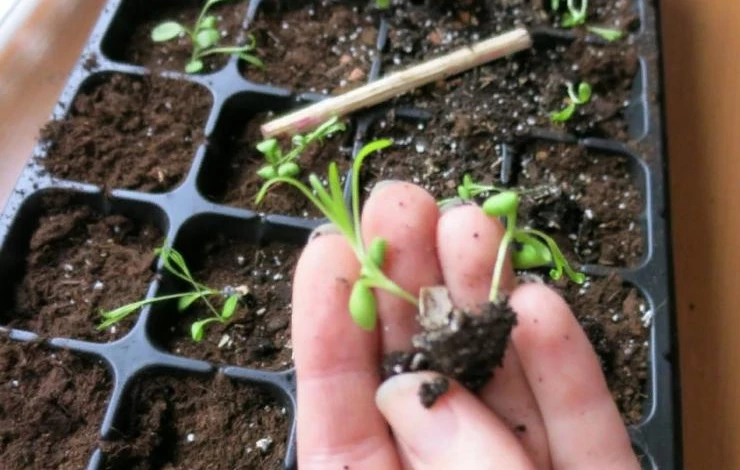
Для успешного выращивания гвоздики Шабо из семян на рассаду необходимо правильно подготовить почву перед пересадкой. Это важный этап, который поможет обеспечить растению оптимальные условия для роста и развития.
Выбор подходящего грунта
Перед сеять гвоздики на рассаду, необходимо выбрать подходящий грунт. Он должен быть плодородным, рыхлым и хорошо дренированным. Для этого можно использовать готовую смесь для рассады или приготовить ее самостоятельно, смешав перегноя, торфа и песка.
Обработка почвы
Перед посевом семян гвоздики необходимо обработать почву. Для этого ее следует просеять, чтобы удалить крупные комки и сорные семена. Также рекомендуется добавить в почву органическое удобрение, чтобы обеспечить растение необходимыми питательными веществами. После этого почву следует хорошо увлажнить.
Подготовка грядок
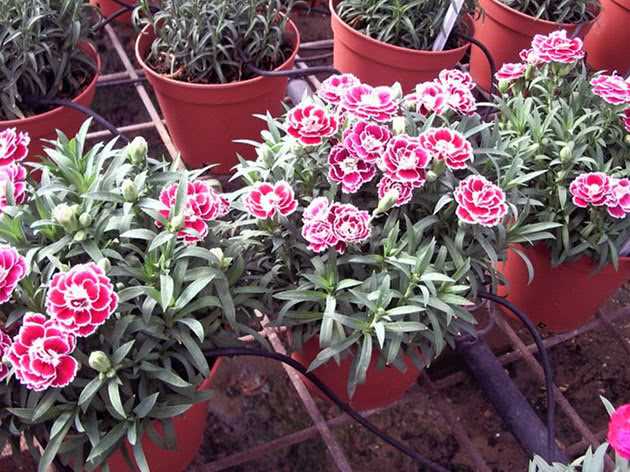
Для выращивания гвоздики Шабо из семян на рассаду можно использовать грядки или контейнеры. В случае использования грядок, они должны быть хорошо подготовлены. Перед посевом семян гвоздики необходимо сделать канавки глубиной около 1 см. Между канавками следует оставлять промежутки примерно около 10-15 см для обеспечения нормального развития растений.
Способы пересадки рассады гвоздики Шабо
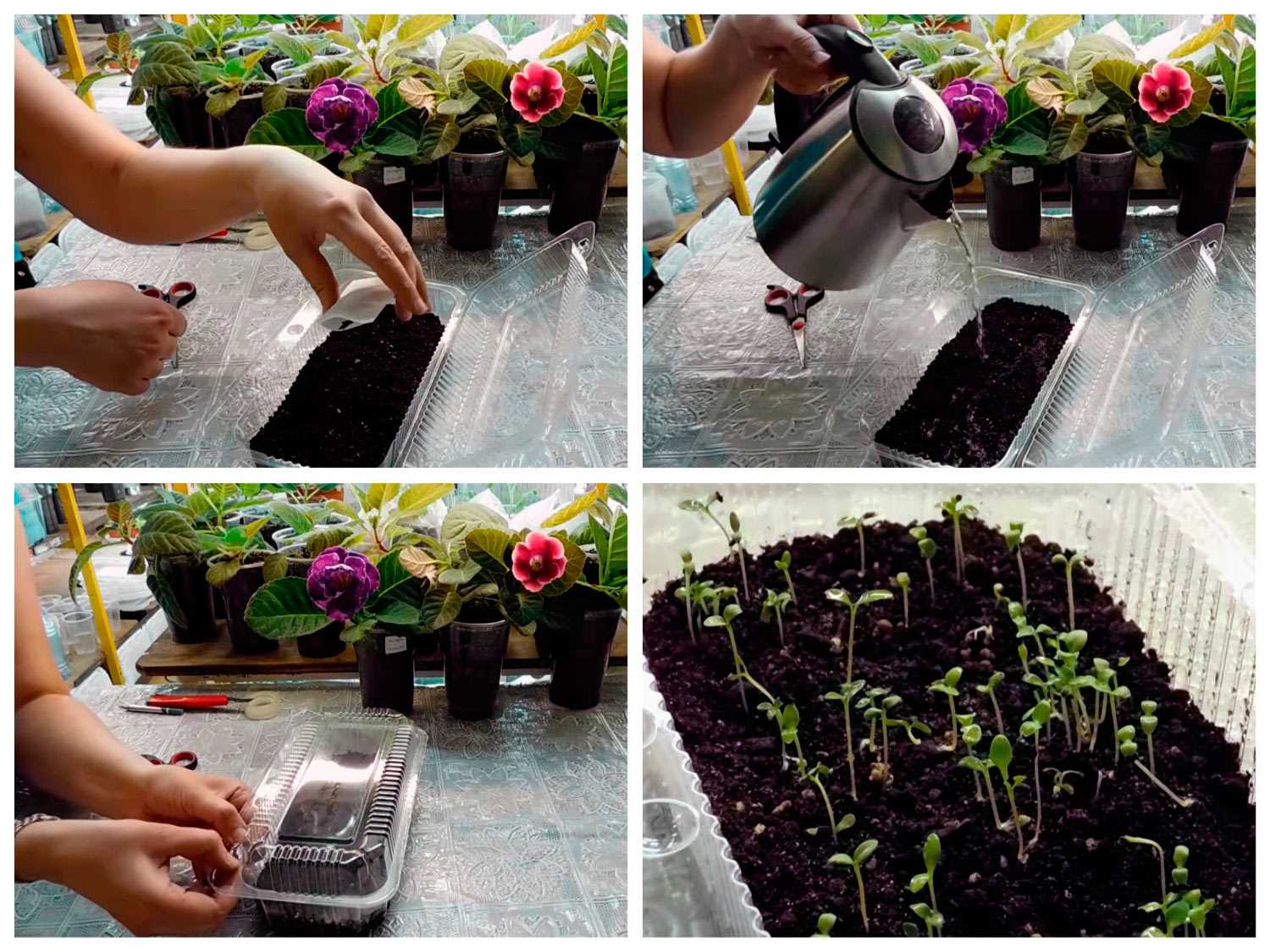
Пересадка рассады гвоздики Шабо является важным этапом в ее выращивании. Это позволяет растению укорениться и развиваться в более просторном горшке или грядке. Вот несколько способов, как это можно сделать:
1. Подготовка почвы

Перед пересадкой рассады гвоздики Шабо необходимо подготовить почву. Она должна быть плодородной, хорошо дренированной и богатой органическими веществами. Для этого можно добавить компост, перегноя или другое органическое удобрение. Также важно удалить сорняки и разрыхлить почву.
2. Выкапывание ям
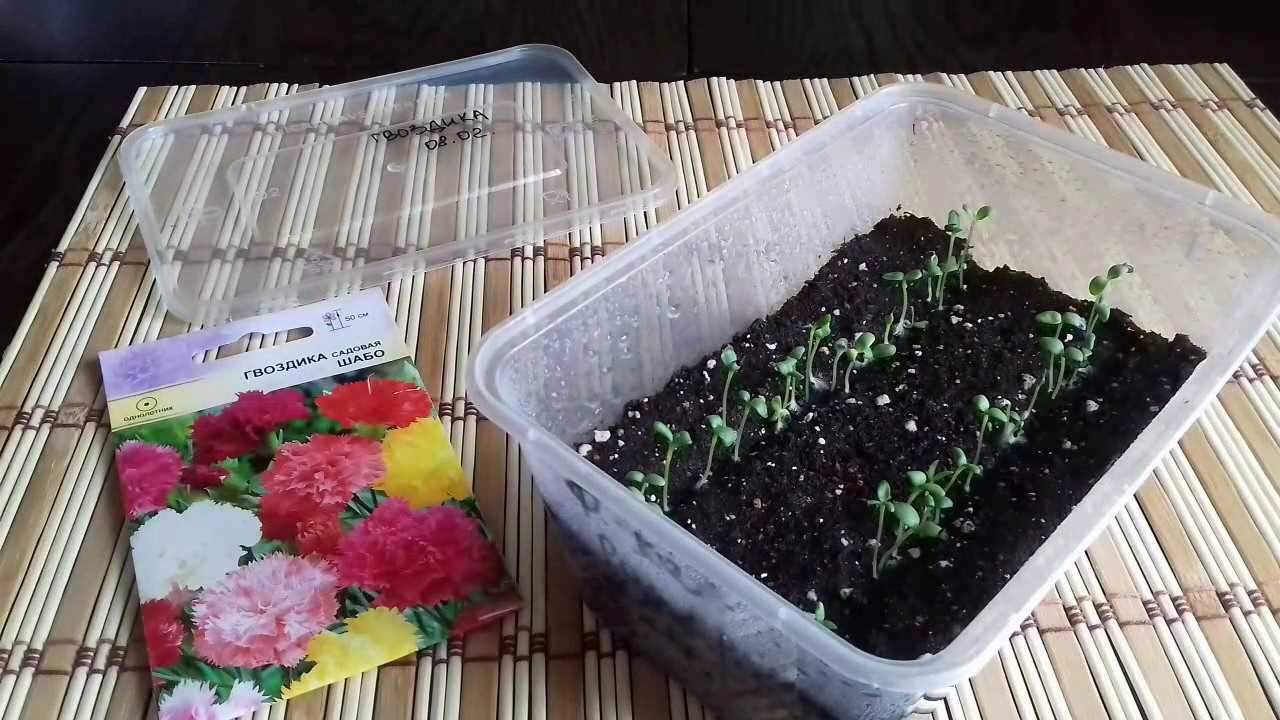
Для пересадки рассады гвоздики Шабо необходимо выкопать ямы достаточной глубины и ширины, чтобы вместить корневую систему растения. Расстояние между ямами должно быть таким, чтобы растения развивались комфортно и не затмевали друг друга.
3. Пересадка рассады

Перед пересадкой рассаду гвоздики Шабо следует хорошо полить, чтобы земля вокруг корней была влажной и растение легко извлекалось из горшка. Затем рассаду нужно аккуратно вынуть из горшка, осторожно разделяя корни, и поместить в яму, прикрывая корни землей. Землю вокруг растения следует хорошо утрамбовать и полить.
Важно помнить, что пересадку рассады гвоздики Шабо лучше проводить в прохладное время суток, чтобы растение не перегрелось. Также нужно обеспечить достаточное освещение и поливать рассаду регулярно, чтобы она хорошо прижилась и продолжила активный рост.
Уход за гвоздикой Шабо после пересадки
После пересадки гвоздику Шабо следует уделять особое внимание, чтобы обеспечить ей правильные условия для роста и развития.
Полив: После пересадки рассаду гвоздики Шабо нужно поливать умеренно, чтобы избежать стояния воды в грунте. Рекомендуется поливать растение только тогда, когда верхний слой грунта высохнет на небольшую глубину.
Удобрение: Чтобы гвоздика Шабо хорошо росла и развивалась, ей необходимо регулярное удобрение. Рекомендуется использовать универсальное комплексное удобрение для цветущих растений, добавляя его в воду для полива один раз в две недели.
Обрезка: Чтобы гвоздика Шабо имела красивую и пышную корону, рекомендуется проводить обрезку. Удалять старые и поврежденные побеги, а также подрезать верхушку, чтобы стимулировать рост боковых побегов.
Защита от вредителей: Гвоздика Шабо подвержена атаке различных вредителей, таких как тля и паутинный клещ. Для защиты растения рекомендуется регулярно осматривать его на наличие вредителей и в случае необходимости применять соответствующие меры по их уничтожению.
Дополнительные требования: Гвоздика Шабо предпочитает солнечное место, поэтому рекомендуется размещать рассаду на окне с южной или западной экспозицией. Также важно обеспечить достаточную вентиляцию, чтобы избежать перегрева растения.
Вопрос-ответ:
Какие условия нужно создать для выращивания гвоздики Шабо из семян на рассаду?
Для выращивания гвоздики Шабо из семян на рассаду необходимо создать определенные условия: температура воздуха должна быть около 20-22 градусов, влажность воздуха не должна быть высокой, растения нуждаются в ярком освещении, но без прямых солнечных лучей.
Какой грунт лучше использовать для выращивания гвоздики Шабо на рассаду?
Для выращивания гвоздики Шабо на рассаду рекомендуется использовать рыхлый и плодородный грунт. Можно использовать готовый почвенный субстрат, предназначенный для выращивания цветов, или приготовить смесь из песка, торфа и перегноя.
Как часто нужно поливать рассаду гвоздики Шабо из семян?
Рассаду гвоздики Шабо из семян нужно поливать умеренно, поддерживая почву во влажном состоянии, но не допуская переувлажнения. Частота полива зависит от условий воздуха и грунта, обычно рекомендуется поливать раз в 2-3 дня.
Какой режим освещения нужен для рассады гвоздики Шабо из семян?
Рассаде гвоздики Шабо из семян необходимо обеспечить яркое освещение, но без прямых солнечных лучей. Можно использовать фитолампы или расположить рассаду на окне с восточной или западной экспозицией.
Как долго нужно выращивать рассаду гвоздики Шабо из семян перед пересадкой в грунт?
Рассаду гвоздики Шабо из семян нужно выращивать в течение 8-10 недель перед пересадкой в грунт. В это время растения успевают образовать достаточно сильные корневые системы и развиться в достаточной степени для успешной адаптации в открытом грунте.







